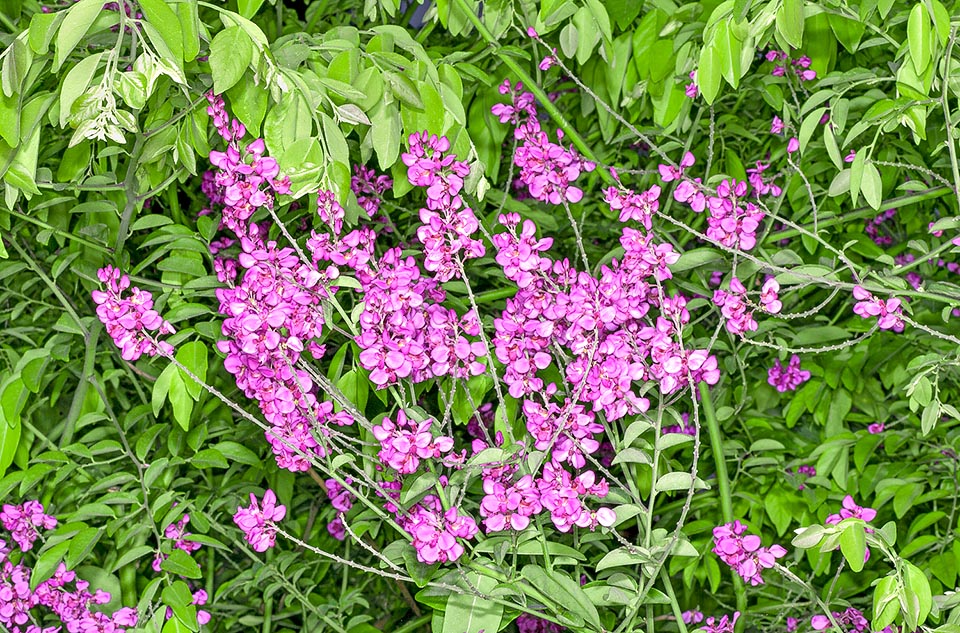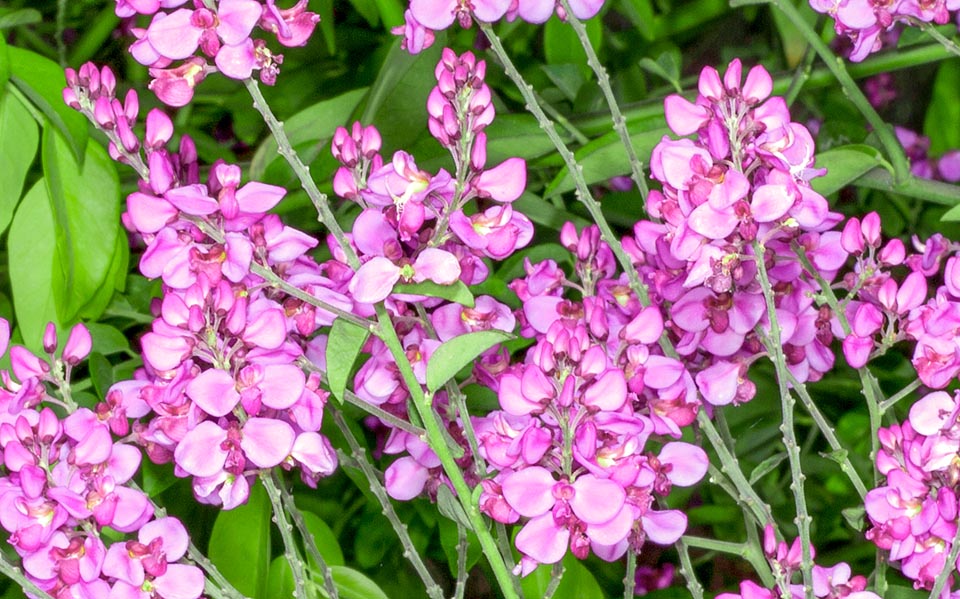Family : Polygalaceae

Text © Pietro Puccio

English translation by Mario Beltramini
The species is native to Argentina, Belize, Bolivia, Brazil (Alagoas, Amazonas, Bahia, Federal District, Pará and Sergipe), Colombia, Costa Rica, Ecuador, El Salvador, French Guiana, Guatemala. Guiana, Honduras, Mexico (Campeche, Chiapas, Guerrero, Jalisco, Michoacán, Oaxaca, Quintana Roo, Tabasco, Veracruz and Yucatan), Nicaragua, Panama, Peru, Suriname, Tobago and Trinidad, U.S.A. (Florida), Venezuela and Windward Islands where it grows in the forests usually at the margins of the clearings and at the borders of water expanses, from the sea level up to about 2000 m of altitude.
The name of the genus is the combination of the Latin substantive “securis, is” = ax and “daca” = dagger, due to the shape of the samarae; the name of the species is the combination of the Latin adjective “diversus, a, um” = different and the substantive “folium, ii” = leaf, because of the leaves of variable shape.
Common names: Easter flower, man vine (English); ya ax ak (Mopan); teelom k’aham (q’eqchi‘); bejuco de amarrar, bejuco de hombre, bejuco mulato, bejuco verde, flor de arrayán (Spanish).

Diffused in all tropical America, the Securidaca diversifolia is a shrub with climbing sarmentose bearing and 3-4,5 m long stems © Giuseppe Mazza
The Securidaca diversifolia (L.) S.F.Blake (1923) is a shrub with climbing sarmentose bearing, erect, sparsely pubescent with cylindrical stems, 3-4,5 m long, with clear brown bark. The leaves, on a slightly pubescent petiole 0,5-1 cm long, are alternate, simple, ovate-lanceolate to oblong-elliptical with obtuse to sub-acuminate apex and entire margin, 3-12 cm long and 2-5 cm broad, thick, chartaceous, of intense green colour, glabrous and rather glossy above, pale green to glaucescent below.
Axillar or terminal racemose inflorescences, 6-14 cm long, compact, with numerous flowers, on a 3-5 cm long pedicel, of pink to purple colour, slightly pubescent, 1-5-2 cm broad.
Calyx with 5 sepals united at the base, 3 external ovate with acute apex, about 2,5 mm long, and 2 internal orbicular unguiculate (with long restricted base similar to a stem), petaloid, 7-10 mm long. Corolla with 3 petals, the upper two ovate, about 6 mm long and 7 mm broad, the lower one keeled with cristate apex, 8-10 mm long, 8 stamens and unilocular superior ovary.

The racemose inflorescences, compact, can be 14 cm long with numerous pink to purple 1,5-2 cm flowers. Medicinal virtues © Giuseppe Mazza
The fruit is a samara with a big wing in the lowest part, 3-5 cm long and 1,5 cm broad in the central zone, containing one globular seed 0,5-0,8 cm long.
Vigorous shrub spread all over tropical America with copious spring blooming, it adapts to various types of soil and of exposition, from the full sun to the partial shade; in cultivation can be made to climb on the trees, on robust trellises, pergolas or grown as sapling with appropriate periodic pruning. Parts of the plant are utilized in the traditional medicine of various populations for various pathologies.
Synonyms: Polygala diversifolia L. (1753); Securidaca erecta Jacq. (1760); Securidaca venosa Rusby (1920); Badiera diversifolia (L.) DC. (1824); Securidaca pubescens var. ovata DC. (1824); Securidaca fendleri Chodat (1895); Elsota diversifolia (L.) S.F.Blake (1924).
